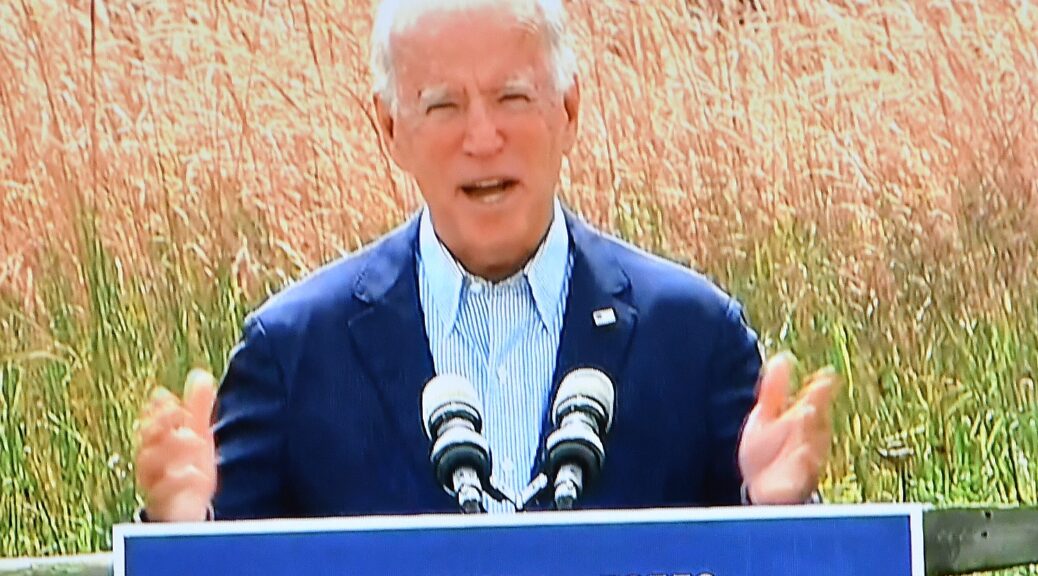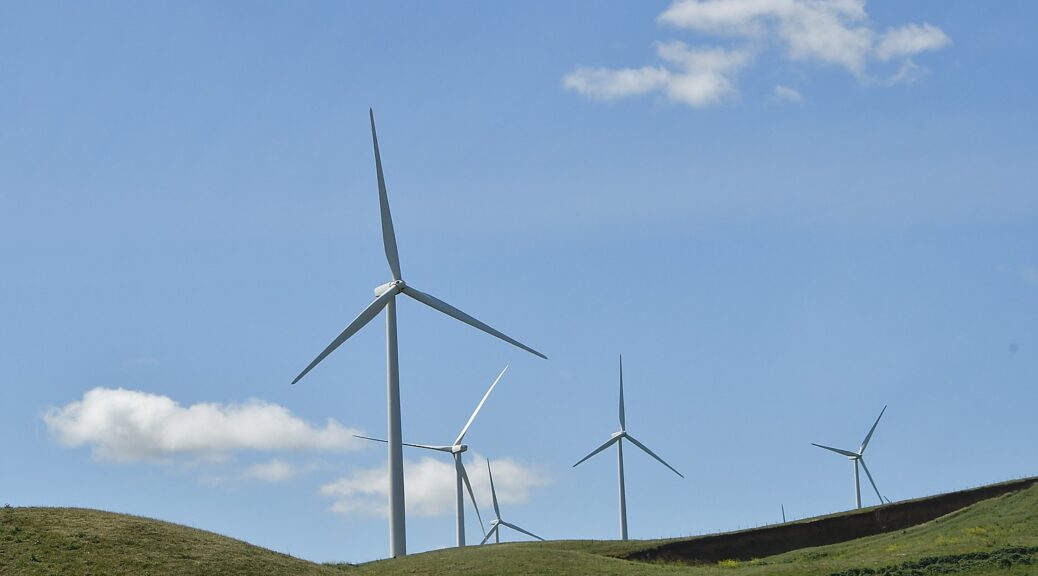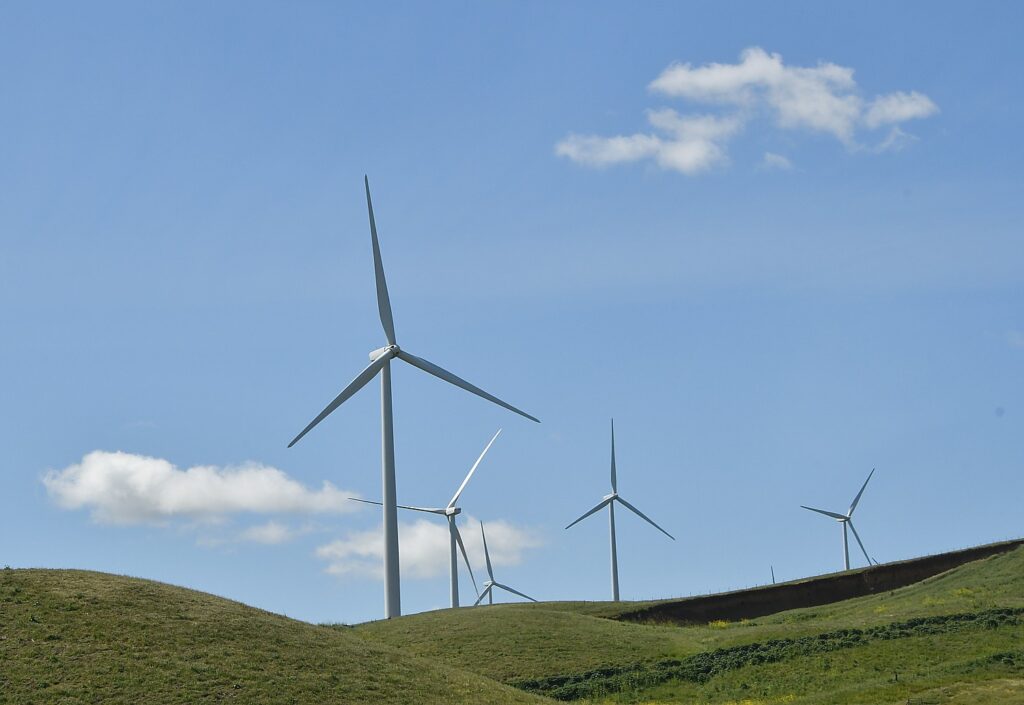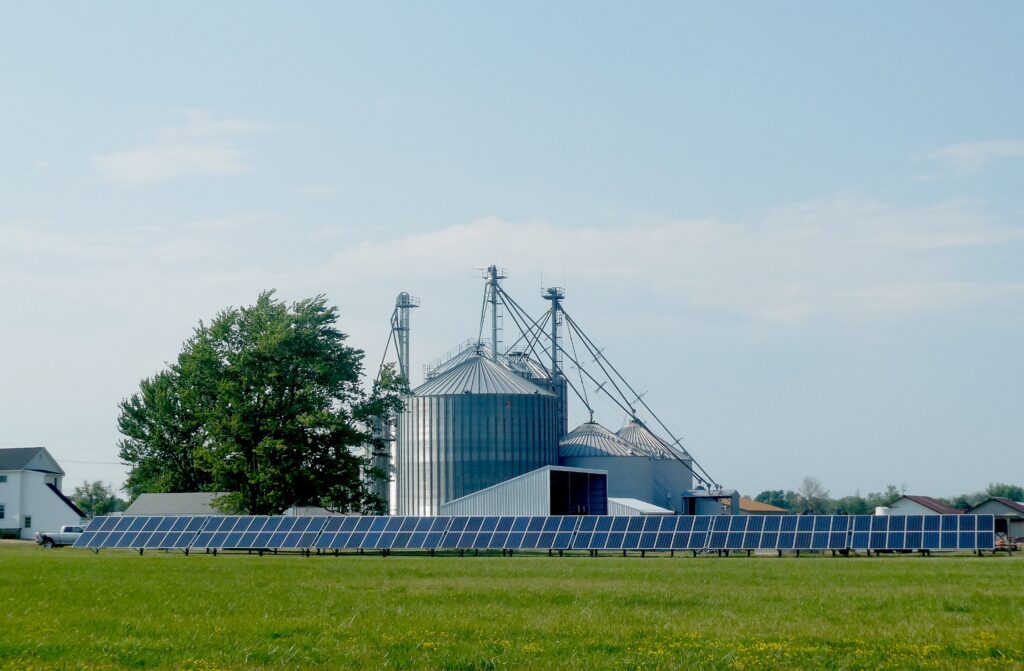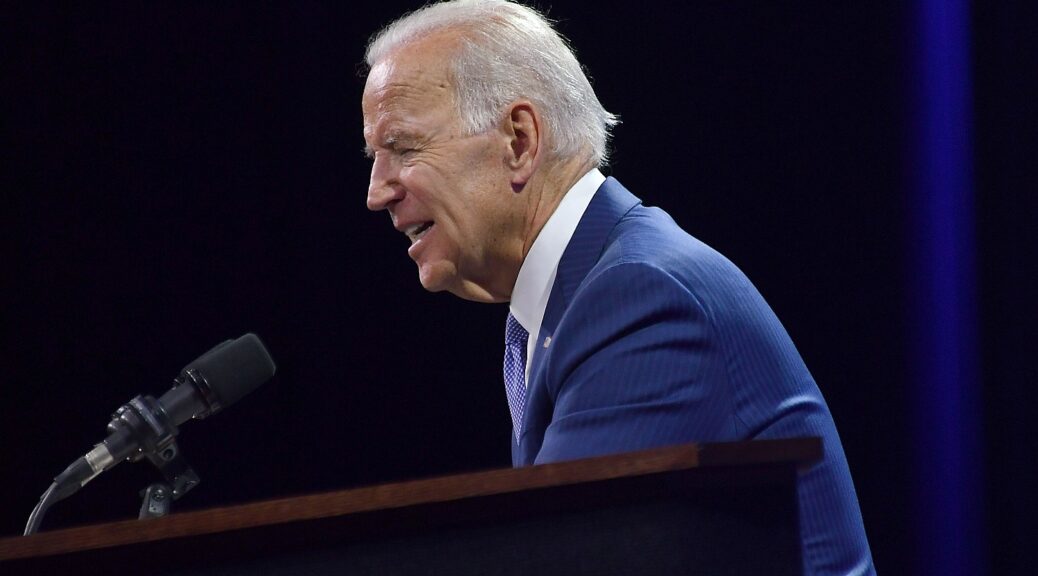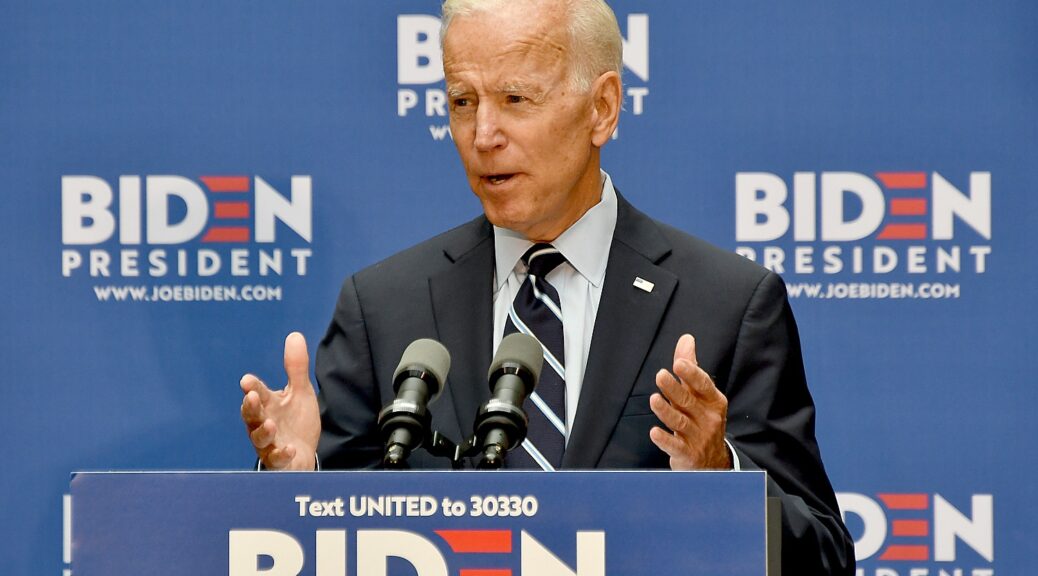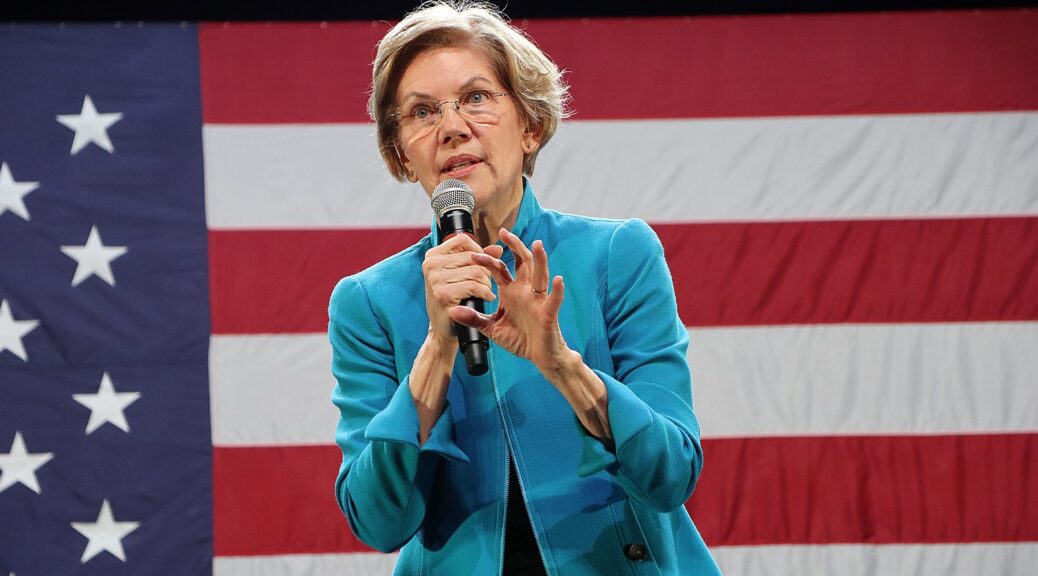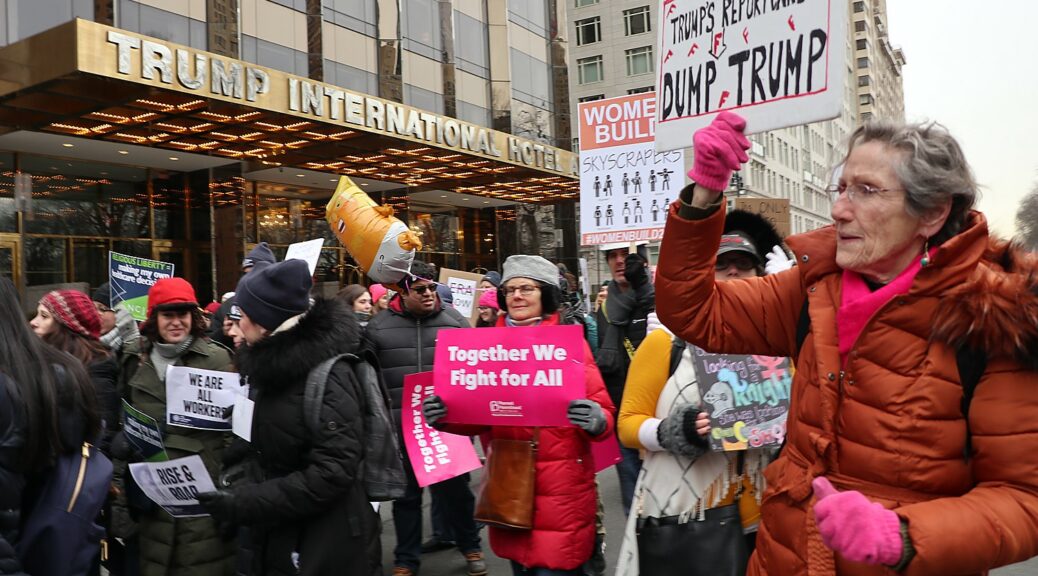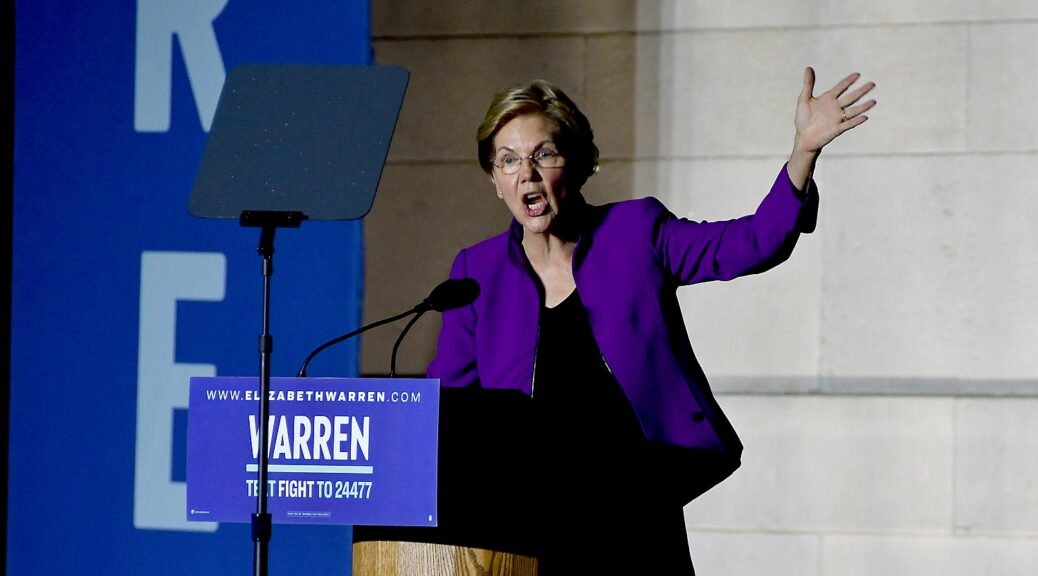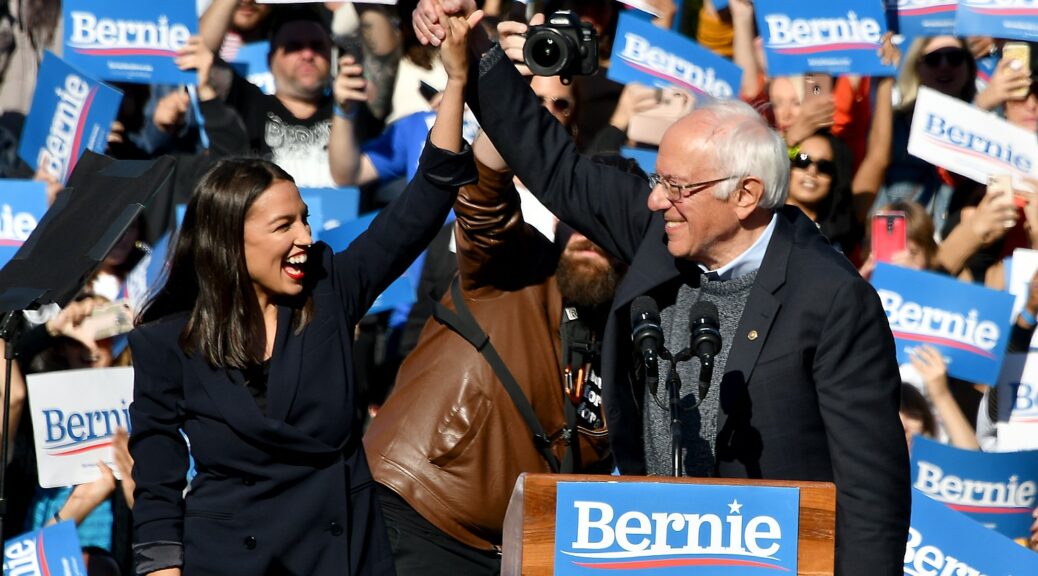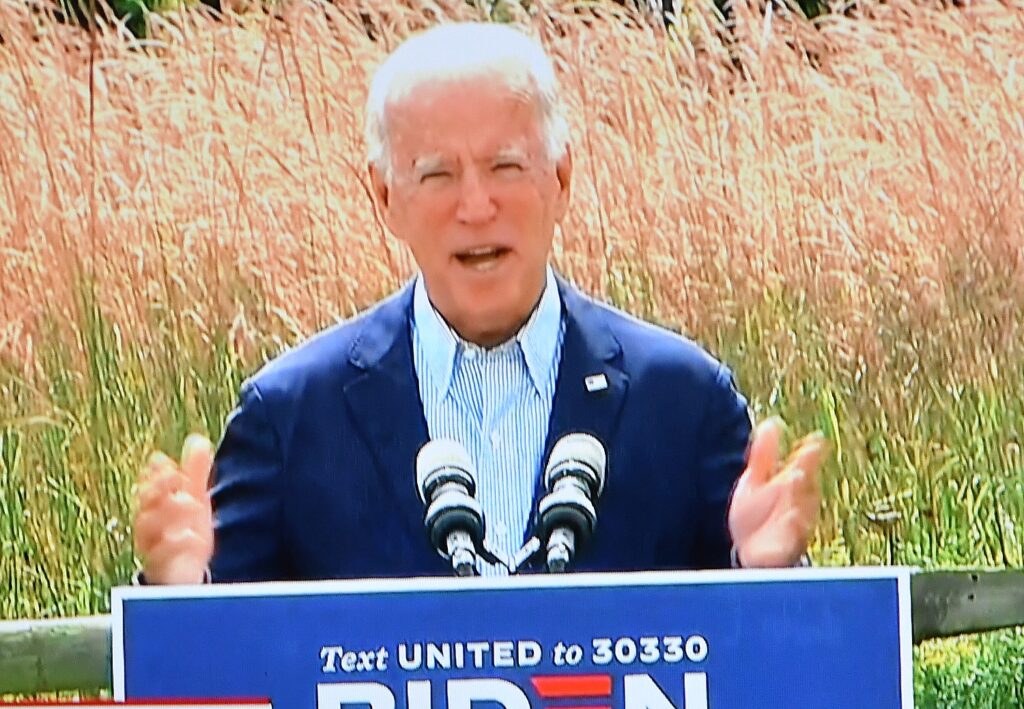
While Trump continues to deny climate change as a “hoax” (one perpetrated by China to hurt US business), minimize the destruction to life and livehood of the wildfires setting the West ablaze that he blamed on California’s “failure” to adequately rake the forest floor, actively denigrate public health experts while promoting conditions for the super-spread of coronavirus, and call for Obama to be jailed for treason, former Vice President Joe Biden, the Democratic candidate for president, spoke out on the urgency to address the existential climate crisis and how he would address it.
“The unrelenting impact of climate change affects every single one of us…It requires action, not denial. It requires leadership, not scapegoating…
“Our response should be grounded in science. Acting together. All of us. But like with our federal response to COVID-19, the lack of a national strategy on climate change leaves us with patchwork solutions…
“But if Trump gets a second term, these hellish events will become more common, more devastating, and more deadly.
“If we have four more years of Trump’s climate denial, how many suburbs will be burned in wildfires? How many suburbs will have been flooded out? How many suburbs will have been blown away in superstorms?
“If you give a climate arsonist four more years in the White House, why would anyone be surprised if more of America is ablaze? ..
“And from the pandemic, the economic freefall, the racial unrest, and the ravages of climate change, it’s clear that we are not safe in Donald Trump’s America.
“Like the pandemic, dealing with climate change is a global crisis that requires American leadership.
“It requires a president to meet the threshold duty of the office — to care for everyone. To defend us from every attack – seen and unseen. Always and without exception. Every time.”
Here is a highlighted transcript of Vice President Joe Biden’s remarks as prepared for delivery in Delaware:
Good afternoon.
As a nation, we face one of the most difficult moments in our history. Four historic crises. All at the same time.
The worst pandemic in over 100 years, that’s killed nearly 200,000 Americans and counting.
The worst economic crisis since the Great Depression, that’s cost tens of millions of American jobs and counting.
Emboldened white supremacy unseen since the 1960s and a reckoning on race long overdue.
And the undeniable, accelerating, and punishing reality of climate change and its impact on our planet and our people — on lives and livelihoods — which I’d like to talk about today.
Jill and I continue to pray for everyone in California, Oregon, Washington, and across the West as the devastating wildfires rage on — just as we’ve held in our hearts those who’ve faced hurricanes and tropical storms on our coasts, in Florida, in North Carolina, or like in parts of New Orleans where they just issued an emergency evacuation for Hurricane Sally, that’s approaching and intensifying; Floods and droughts across the Midwest, the fury of climate change everywhere — all this year, all right now.
We stand with our families who have lost everything, the firefighters and first responders risking everything to save others, and the millions of Americans caught between relocating during a pandemic or staying put as ash and smoke pollute the air they breathe.
Think about that.
People are not just worried about raging fires. They are worried about breathing air. About damage to their lungs.
Parents, already worried about Covid-19 for their kids when they’re indoors, are now worried about asthma attacks for their kids when they’re outside.
Over the past two years, the total damage from wildfires has reached nearly $50 Billion in California alone.
This year alone, nearly 5 million acres have burned across 10 states — more acres than the entire state of Connecticut.
And it’s only September. California’s wildfire season typically runs through October.
Fires are blazing so bright and smoke reaching so far, NASA satellites can see them a million miles away in space.
The cost of this year’s damage will again be astronomically high.
But think of the view from the ground, in the smoldering ashes.
Loved ones lost, along with the photos and keepsakes of their memory. Spouses and kids praying each night that their firefighting husband, wife, father, and mother will come home. Entire communities destroyed.
We have to act as a nation. It shouldn’t be so bad that millions of Americans live in the shadow of an orange sky and are left asking if doomsday is here.
I know this feeling of dread and anxiety extends beyond just the fires. We’ve seen a record hurricane season costing billions of dollars. Last month, Hurricane Laura intensified at a near-record rate just before its landfall along Louisiana and the Gulf Coast.
It’s a troubling marker not just for an increased frequency of hurricanes, but more powerful and destructive storms. They’re causing record damage after record damage to people’s homes and livelihoods.
And before it intensified and hit the Gulf Coast, Laura ravaged Puerto Rico — where, three years after Hurricane Maria — our fellow Americans are still recovering from its damage and devastation.
Think about that reality.
Our fellow Americans are still putting things back together from the last big storm as they face the next one.
We’ve also seen historic flooding in the Midwest — often compounding the damages delivered by last year’s floods that cost billions dollars in damage.
This past spring Midland, Michigan experienced a flood so devastating — with deadly flash flooding, overrunning dams and roadways, and the displacement of 10,000 residents — that it was considered a once-in-500-year weather event.
But those once-in-many-generations events? They happen every year now.
The past ten years were the hottest decade ever recorded. The Arctic is literally melting. Parts are on fire.
What we’re seeing in America — in our communities — is connected to that.
With every bout with nature’s fury, caused by our own inaction on climate change, more Americans see and feel the devastation in big cities, small towns, on coastlines and farmlands.
It is happening everywhere. It is happening now. It affects us all.
Nearly two hundred cities are experiencing the longest stretches of deadly heat waves in fifty years. It requires them to help their poor and elderly residents adapt to extreme heat to simply stay alive, especially in homes without air conditioning.
Our family farmers in the Midwest are facing historic droughts.
These follow record floods and hurricane-speed windstorms all this year.
It’s ravaged millions of acres of corn, soybeans, and other crops. Their very livelihood which sustained their families and our economy for generations is now in jeopardy.
How will they pay their bills this year? What will be left to pass on to their kids?
And none of this happens in a vacuum.
A recent study showed air pollution is linked with an increased risk of death from COVID-19.
Our economy can’t recover if we don’t build back with more resiliency to withstand extreme weather — extreme weather that will only come with more frequency.
The unrelenting impact of climate change affects every single one of us. But too often the brunt falls disproportionately on communities of color, exacerbating the need for environmental justice.
These are the interlocking crises of our time.
It requires action, not denial.
It requires leadership, not scapegoating.
It requires a president to meet the threshold duty of the office — to care for everyone. To defend us from every attack – seen and unseen. Always and without exception. Every time.
Because here’s the deal.
Hurricanes don’t swerve to avoid “blue states.” Wildfires don’t skip towns that voted a certain way.
The impacts of climate change don’t pick and choose. That’s because it’s not a partisan phenomenon.
It’s science.
And our response should be the same. Grounded in science. Acting together. All of us.
But like with our federal response to COVID-19, the lack of a national strategy on climate change leaves us with patchwork solutions.
I’m speaking from Delaware, the lowest-lying state in the nation, where just last week the state’s Attorney General sued 31 big fossil fuel companies alleging that they knowingly wreaked damage on the climate.
Damage that is plain to everyone but the president.
As he flies to California today, we know he has no interest in meeting this moment.
We know he won’t listen to the experts or treat this disaster with the urgency it demands,
as any president should do during a national emergency.
He’s already said he wanted to withhold aid to California — to punish the people of California — because they didn’t vote for him.
This is yet another crisis he won’t take responsibility for.
The West is literally on fire and he blames the people whose homes and communities are burning.
He says, “You gotta clean your floors, you gotta clean your forests.”
This is the same president who threw paper towels to the people of Puerto Rico instead of truly helping them recover and rebuild.
We know his disdain for his own military leaders and our veterans.
Just last year, the Defense Department reported that climate change is a direct threat to more than two-thirds of our military’s operationally critical installations. And this could well be a conservative estimate.
Donald Trump’s climate denial may not have caused the record fires, record floods, and record hurricanes.
But if he gets a second term, these hellish events will become more common, more devastating, and more deadly.
Meanwhile, Donald Trump warns that integration is threatening our suburbs. That’s ridiculous.
But you know what’s actually threatening our suburbs?
Wildfires are burning the suburbs in the West. Floods are wiping out suburban neighborhoods in the Midwest. And hurricanes are imperiling suburban life along our coasts.
If we have four more years of Trump’s climate denial, how many suburbs will be burned in wildfires? How many suburbs will have been flooded out? How many suburbs will have been blown away in superstorms?
If you give a climate arsonist four more years in the White House, why would anyone be surprised if more of America is ablaze?
If you give a climate denier four more years in the White House, why would anyone be surprised when more of America is under water?
We need a president who respects science, who understands that the damage from climate change is already here, and, unless we take urgent action, will soon be more catastrophic.
A president who recognizes, understands, and cares that Americans are dying.
Which makes President Trump’s climate denialism — his disdain of science and facts — all the more unconscionable.
Once again, he fails the most basic duty to this nation.
He fails to protect us.
And from the pandemic, the economic freefall, the racial unrest, and the ravages of climate change, it’s clear that we are not safe in Donald Trump’s America.
What he doesn’t get is that even in crisis, there is nothing beyond our capacity as a country.
And while so many of you are hurting right now, I want you to know that if you give me the honor of serving as your President, we can, and we will, meet this moment with urgency and purpose.
We can and we will solve the climate crisis, and build back better than we were before.
When Donald Trump thinks about climate change he thinks: “hoax.”
I think: “jobs.”
Good-paying, union jobs that put Americans to work building a stronger, more climate resilient nation.
A nation with modernized water, transportation and energy infrastructure to withstand the impacts of extreme weather and a changing climate.
When Donald Trump thinks about renewable energy, he sees windmills somehow causing cancer.
I see American manufacturing — and American workers — racing to lead the global market. I also see farmers making American agriculture first in the world to achieve net-zero emissions, and gaining new sources of income in the process.
When Donald Trump thinks about LED bulbs, he says he doesn’t like them because: “the light’s no good. I always look orange.”
I see the small businesses and master electricians designing and installing award-winning energy conservation measures.
This will reduce the electricity consumption and save businesses hundreds of thousands of dollars a year in energy costs.
While he turns us against our allies, I will bring us back into the Paris Agreement. I will put us back in the business of leading the world on climate change. And I will challenge everyone to up the ante on their climate commitments.
Where he reverses the Obama-Biden fuel-efficiency standards, he picks Big Oil companies over the American workers.
I will not only bring the standards back, I will set new, ambitious ones — that our workers are ready to meet.
And I also see American workers building and installing 500,000 electric vehicle charging stations across the country and American consumers switching to electric vehicles through rebates and incentives.
Not only that, the United States owns and maintains an enormous fleet of vehicles — and we’re going to harness the purchasing power of our federal government to make sure we are buying electric vehicles that are made and sourced by union workers right here in the United States of America.
All together, this will mean one million new jobs in the American auto industry.
And we’ll do another big thing: put us on a path of achieving a carbon-pollution free electricity sector by 2035 that no future president can turn back.
Transforming the American electricity sector to produce power without carbon pollution will be the greatest spur to job creation and economic competitiveness in the 21st Century. Not to mention the positive benefits to our health and our environment.
We need to get to work right away.
We’ll need scientists at national labs and land-grant universities and Historically Black Colleges and Universities to improve and innovate the technologies needed to generate, store, and transmit this clean electricity.
We’ll need engineers to design them and workers to manufacture them. We’ll need iron workers and welders to install them.
And we’ll become the world’s largest exporter of these technologies, creating even more jobs.
We know how to do this.
The Obama-Biden Administration rescued the auto industry and helped them retool.
We made solar energy cost-competitive with traditional energy, and weatherized more than a million homes.
We will do it again — bigger and faster and better than before.
We’ll also build 1.5 million new energy-efficient homes and public housing units that will benefit our communities three-times over — by alleviating the affordable housing crisis, by increasing energy efficiency, and by reducing the racial wealth gap linked to home ownership.
There are thousands of oil and natural gas wells that the oil and gas companies have just abandoned, many of which are leaking toxins.
We can create 250,000 jobs plugging those wells right away — good union jobs for energy workers. This will help sustain communities and protect the environment as well.
We’ll also create new markets for our family farmers and ranchers.
We’ll launch a new, modern day Civilian Climate Corps to heal our public lands and make us less vulnerable to wildfires and floods.
I believe that every American has a fundamental right to breathe clean air and drink clean water. But I know that we haven’t fulfilled that right.
That’s true of the millions of families struggling with the smoke created by these devastating wildfires right now.
But it’s also been true for a generation or more in places — like Cancer Alley in Louisiana or along the Route 9 corridor right here in Delaware.
Fulfilling this basic obligation to all Americans — especially Black, Brown, and Native American communities, who too often don’t have clean air and clean water — is not going to be easy.
But it is necessary. And I am committed to doing it.
These aren’t pie-in-the-sky dreams. These are concrete, actionable policies that create jobs, mitigate climate change, and put our nation on the road to net-zero emissions by no later than 2050.
Some say that we can’t afford to fix this.
But here’s the thing.
Look around at the crushing consequences of the extreme weather events I’ve been describing. We’ve already been paying for it. So we have a choice.
We can invest in our infrastructure to make it stronger and more resilient, while at the same time tackling the root causes of climate change.
Or, we can continue down the path of Donald Trump’s indifference, costing tens of billions of dollars to rebuild, and where the human costs — the lives and livelihoods and homes and communities destroyed — are immeasurable.
We have a choice.
We can commit to doing this together because we know that climate change is the existential challenge that will define our future as a country, for our children, grandchildren, and great-children.
Or, there’s Donald Trump’s way — to ignore the facts, to deny reality that amounts to full surrender and a failure to lead.
It’s backward-looking politics that will harm the environment, make communities less healthy, and hold back economic progress while other countries race ahead.
And it’s a mindset that doesn’t have any faith in the capacity of the American people to compete, to innovate, and to win.
Like the pandemic, dealing with climate change is a global crisis that requires American leadership.
It requires a president for all Americans.
So as the fires rage out West on this day, our prayers remain with everyone under the ash.
I know it’s hard to see the sun rise and believe today will be better than yesterday when America faces this historic inflection point.
A time of real peril, but also a time of extraordinary possibilities.
I want you to know that we can do this.
We will do this.
We are America.
We see the light through the dark smoke.
We never give up.
Always.
Without exception.
Every time.
May God bless our firefighters and first responders.
May God protect our troops.

